Are you looking for the best potato varieties for grow bags to help you achieve a bountiful harvest? Look no further! We understand that growing seed potatoes can be challenging, and that’s why we will tell you the best way to grow potatoes in a grow bag.
We’ll be discussing the pros and cons of each variety, the ideal growing conditions, and how to plant and care for them. Whether you’re a beginner or a seasoned gardener, our article will provide the information you need to grow potatoes.
Let’s get started!
Contents
Choosing the Best Potato Varieties to Grow – Editor’s Picks
Choosing the best seed potatoes to grow can be a daunting task with so many options available. It’s essential to consider factors such as your climate, soil type, and desired outcome.
Researching the specific needs and characteristics of each variety can also be helpful in finding the best potato grow bags.
When it comes to the best potato plants, these are some of the best and most popular varieties:
1. Kennebec Potatoes
These potatoes are really well regarded due to their high yield and very versatile nature. The skin and flesh of these potatoes are completely white and they come in an oval shape. Due to their medium size, they are really good for making french fries, baking, etc.
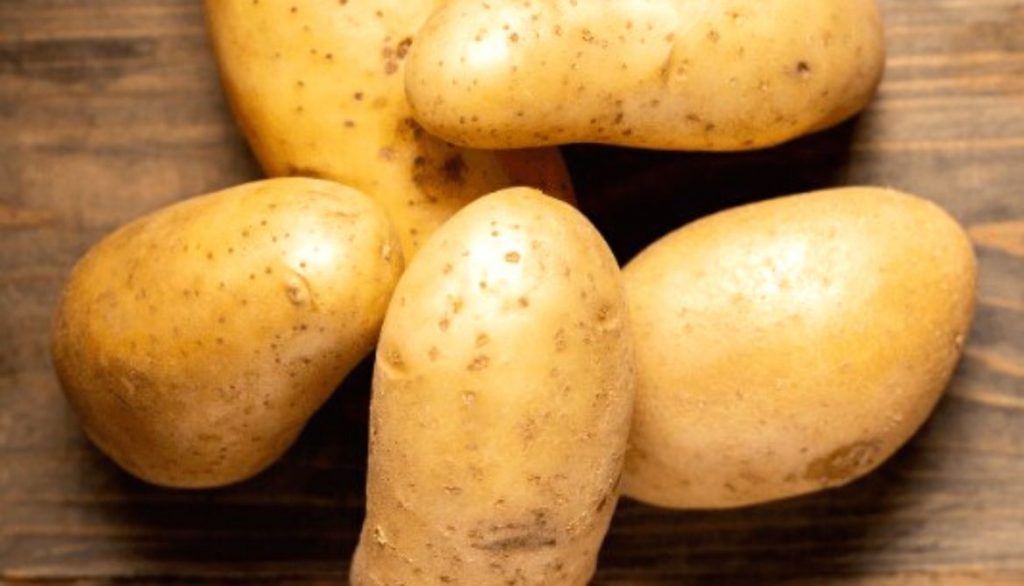
If you are fond of mashed potatoes, this potato plant is one of the best:
- A great thing about these particular seed potatoes is that they have a really good storage quality.
- You can easily keep them for longer periods of time without any issues.
- They have really good resistance to diseases and heat.
Whether you are a home gardener or a commercial grower, these potato plants are a solid choice.
When to Plant Potatoes
These are planted in early spring as soon as the soil temp is about 55 degrees Fahrenheit. March or April is generally the best time to plant these seed potatoes.
Yield: | High |
Maturity Time (days): | 80-100 |
Weight (ounces): | 6-8 |
- These potatoes have a really good yield
- You can use them in a lot of different ways
- They have really high disease resistance
- You can store these potato plants for a long time
- Maturity time is also good
- Not good for cold climates
2. French Fingerling Potatoes
If you are in search of potatoes that yield best in potato grow bags then the French Fingerling potatoes are a perfect choice. These are heirlooms that can be easily spotted due to their finger-like shape.
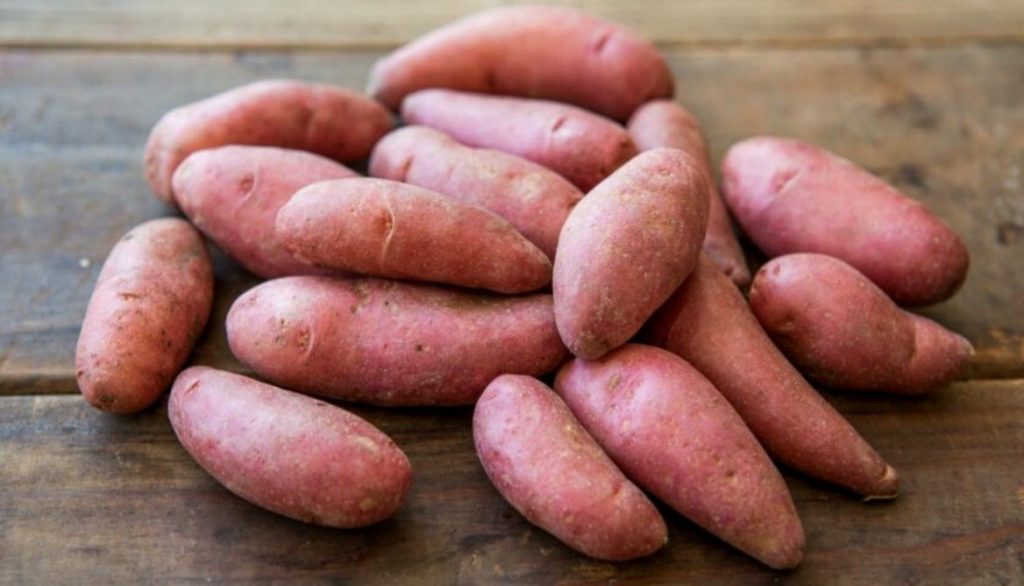
This potato plant grows potatoes with thin but smooth skin that can be either yellow flesh, purple, or red in color:
- Used in top-of-the-line restaurants, especially by gourmet chefs.
- These potatoes are also quite versatile and you can use them for boiling, roasting, or grilling.
- Due to high storage capability, you can store them for a long time.
When to Plant Potatoes
The seed potatoes should be planted in either spring or fall, whenever it is cool. The soil should be well drained with a pH of 5 to 7. It will take about 60 days for the early potatoes to mature.
Yield: | Moderate |
Maturity Time (days): | 100 |
Weight (ounces): | 1-2 |
- These potatoes are visually appealing in dishes
- Great for gourmet dishes due to their nutty flavor
- You can use these potatoes in a variety of ways like roasting, boiling, etc
- French Fingerling potatoes have high disease resistance
- You can store them for a long time
- Don’t grow well in poorly drained soils
3. Russet Fresh Potatoes
If you are looking to grow potatoes for baking or frying, then the Russet potatoes are an amazing choice for you. These potatoes are also known as Idaho potatoes and increase to a large size.
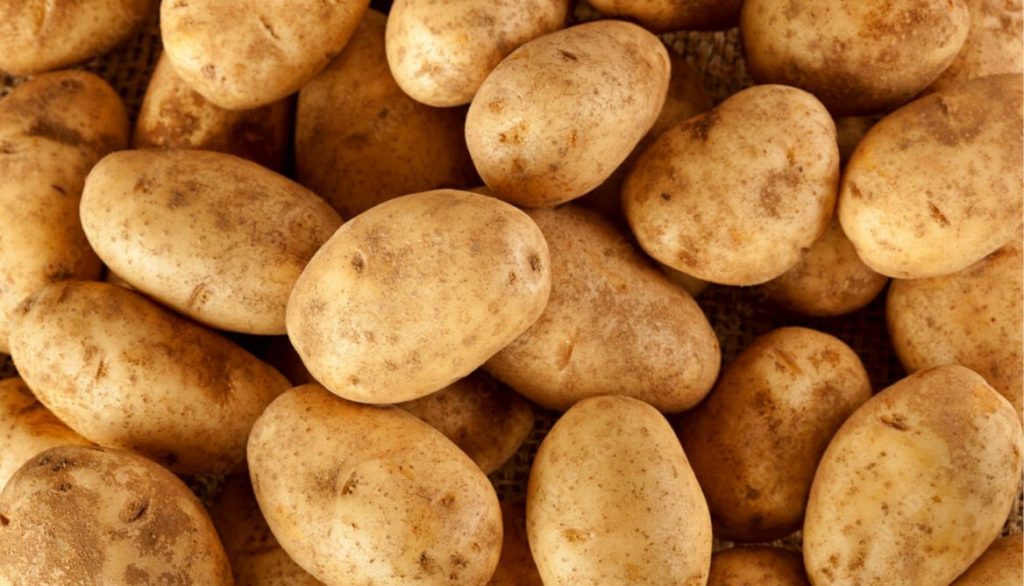
The Russet Fresh Potatoes has next features:
- Rough brown skin and are high in starch content making them an ideal choice for french fries.
- You can also bake, and mash them as well.
- When kept in a cool, dark place, these potatoes can survive for months without any problem.
- Diseases such as late blight are a non-issue for these potato plants due to their high disease resistivity.
When to Plant Potatoes
The ideal temperature for planting seed potatoes is about 45 to 50 degrees Fahrenheit. You can plant them directly in the ground or you can use a potato grow bag as well. Make sure to wait for the ground to warm up before planting them in grow bags.
Yield: | High |
Maturity Time (days): | 100-120 |
Weight (ounces): | 6-8 |
- Excellent french fries because they can hold their shape
- The storage life is really good
- Can easily survive diseases
- You can easily grow them in potato grow bags
- Some customers reported that the potatoes were soft
4. Adirondack Blue Potatoes
This is a very new variety of potatoes that is known for its blue flesh and skin. It automatically makes them a great choice for a gourmet dish due to their unique color and nutty flavor.
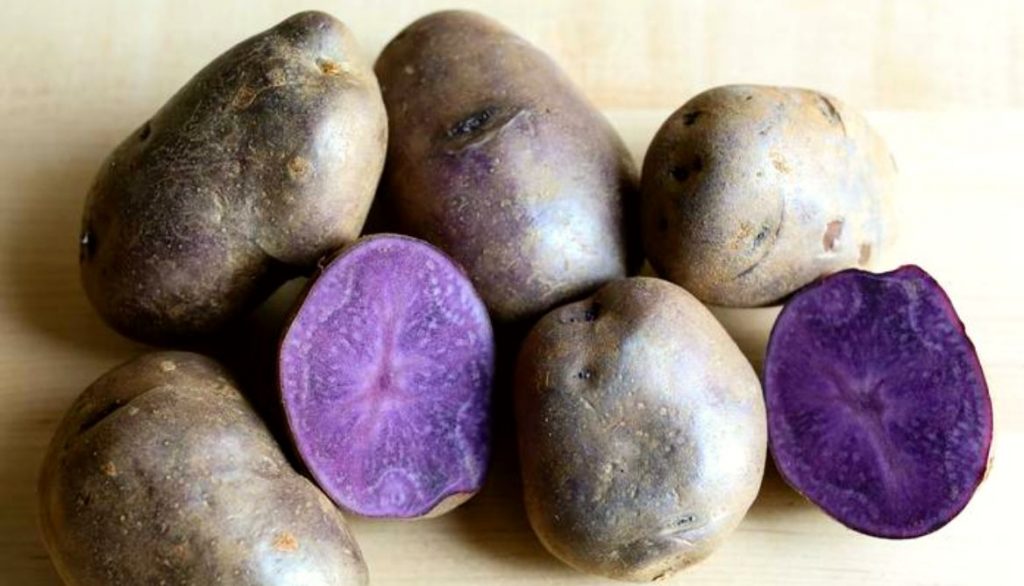
- These potatoes are of medium size and the texture is waxy.
- You can easily boil, grill, and roast them.
- Adirondack Blue potatoes are rich in sugar content. These potatoes are sweeter than other varieties.
- These seed potatoes are very rare and are not commonly present in supermarkets.
When to Plant Potatoes
These can be planted in potato grow bags in early spring. This seed potato grows best in a temperature of 45-50 degrees Fahrenheit in well-drained soil.
Yield: | Moderate |
Maturity Time (days): | 80-90 |
Weight (ounces): | 4-6 |
- The blue color adds a visual appeal to every dish
- These potatoes are versatile and can be roasted, grilled, or boiled
- The buttery and nutty flavor is amazing
- These potatoes are hard to find
Growing Potatoes In A Bag (Potato Grow Bags)
Growing potatoes in a bag are not as weird as it might seem. It has its fair share of advantages. You need to take note that the bags we’re referring to are not the ones in which you grow tomatoes:
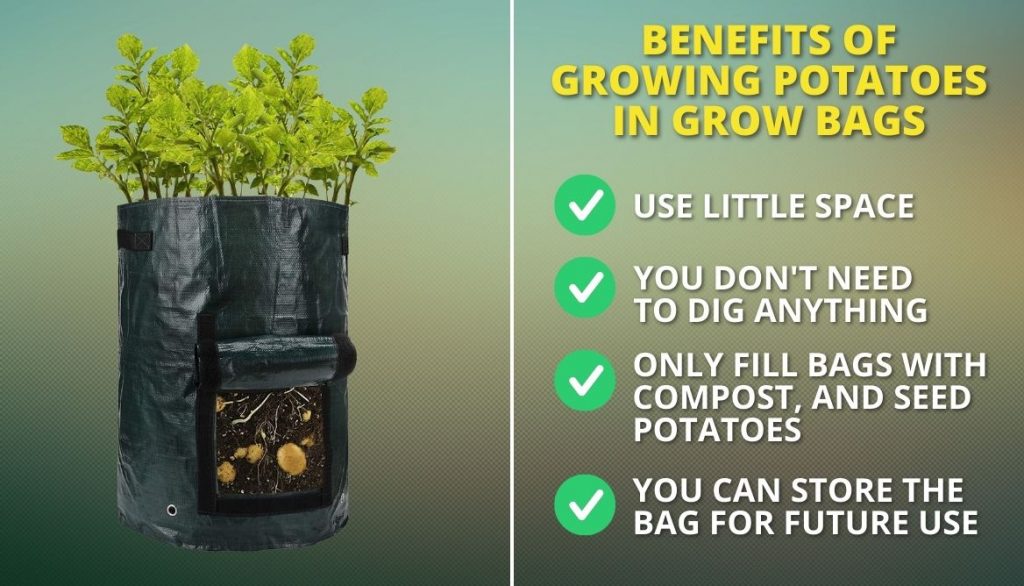
- These potato-growing bags have a barrel shape and are upright.
- They use little space, so you can easily grow potatoes in these bags.
- This method of growing potatoes is really easy as you don’t need to dig anything.
- Fill the potato bags with compost, and seed potatoes and you’re good to go.
In this way, you have full control over the quality of the product. After you have harvested the potatoes, you can store the bag for future use.
Planting Potatoes In A Bag (Seed Potatoes)
Growing potatoes in a bag is a clever idea as it will help you save a lot of space and provide you with control over the product. You need a grow bag in which you will grow potatoes.
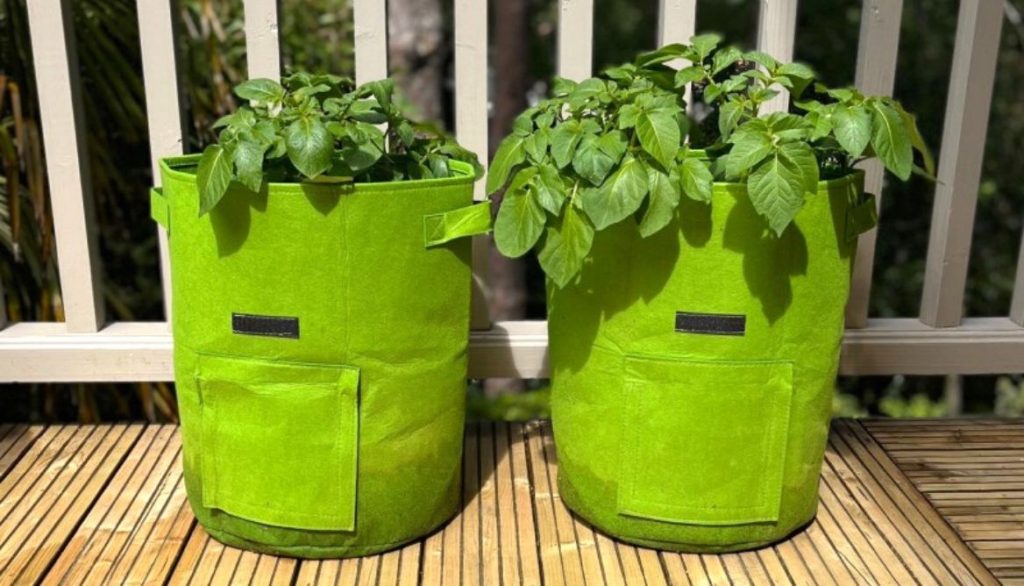
- Fill the bag with potting mix or compost.
- Then move on and make a small hole in the middle where you will put the seed potatoes. It should be around 4 inches deep.
- Cover the seeds with about 4 inches of more soil, water it, and leave them in the sun. So, as the plant starts to grow in the grow bag, keep adding more soil.
- Only the top leaves should be exposed.
- Don’t put too much water and when the leaves start to yellow, start harvesting the potatoes from the grow bag.
Supplies to Grow Potatoes
For planting potatoes in a grow bag, you need the following supplies:
- A grow bag
- Potting mix
- Seed potatoes
- Watering can
- Fertilizer (if you want to boost the soil quality)
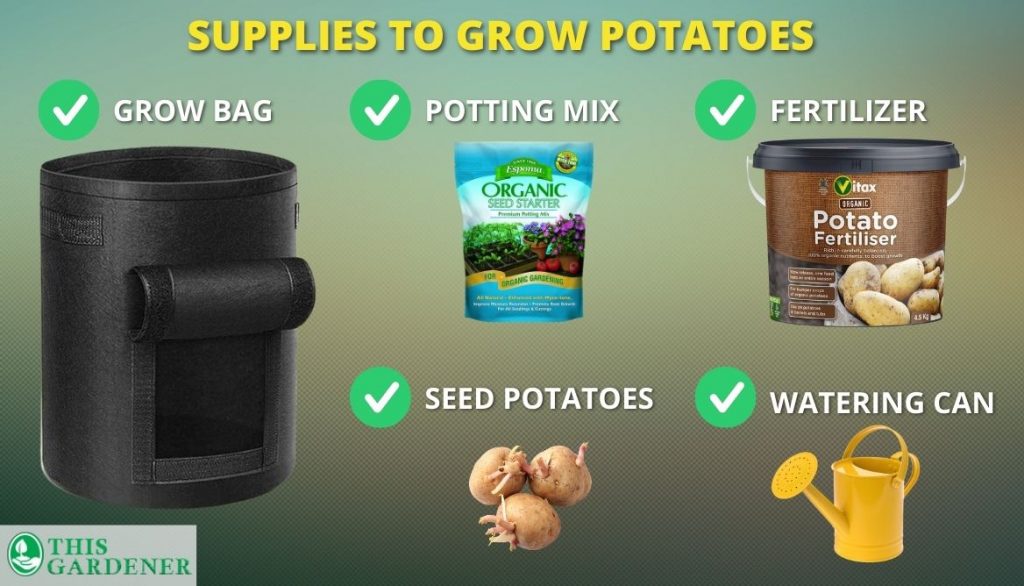
Planting and Earthing Up a Potato Plant
- As soon as the chit potato sprouts, you need to prepare your grow bag in its desired location
- You should roll down the sides of the grow bag for maximum sunlight
- Fill the bottom side of the grow bag with compost
- The seeds should be present at least 2 inches below the compost. Make sure the sprout end is pointing upwards
- Keep watering the soil over the next few weeks so that the compost doesn’t dry out
- For the best result, keep watering during the whole season
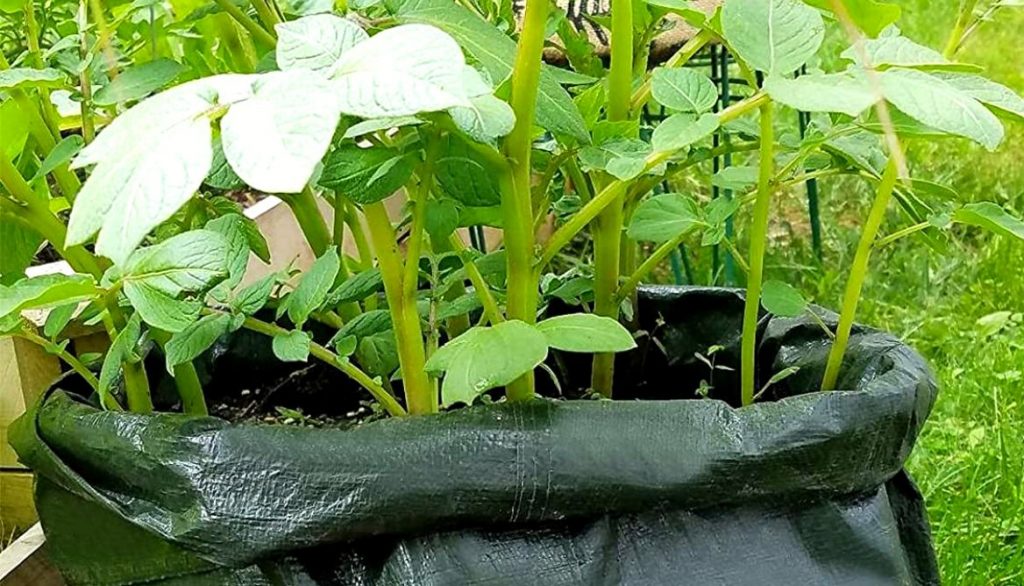
When the potato plant starts to come up from the compost, it will start growing rapidly. Unravel the potato bag after you have 6 inches of foliage. Gently earth up the potatoes with the compost. You will need to earth them until the potatoes planted are fully grown.
This process is great because it allows the potato tubers to grow in a healthy way with sufficient sunlight.
Potato Seed Quantity Per Grow Bag
The size of the seed potatoes and the grow bag determine how many potatoes you should place.
If you have a small 5-10 gallon grow bag, then it can easily fit 1 or 2 potato plants. For the bigger 20-gallon grow bags, you can fit as many as 6 plants and grow sweet potatoes.
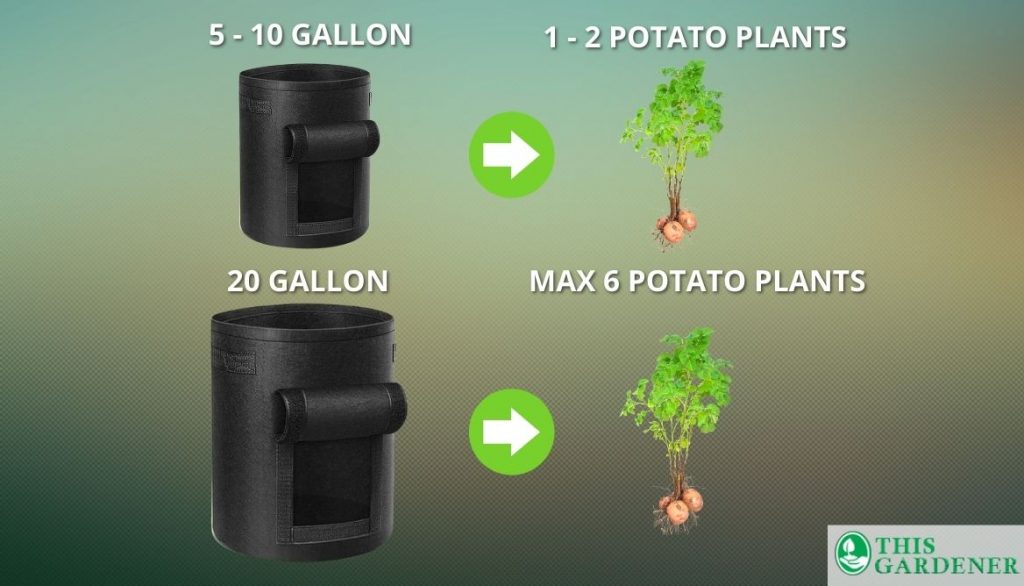
There are small mini tubers that only have 2 or 3 sprouts and you can plant all of them to create a single plant.
On the other hand, larger seed potatoes are cut and left to dry out. Then you plant each of the pieces separately to grow entire plants.
Preparing Seed Potato Varieties for Planting
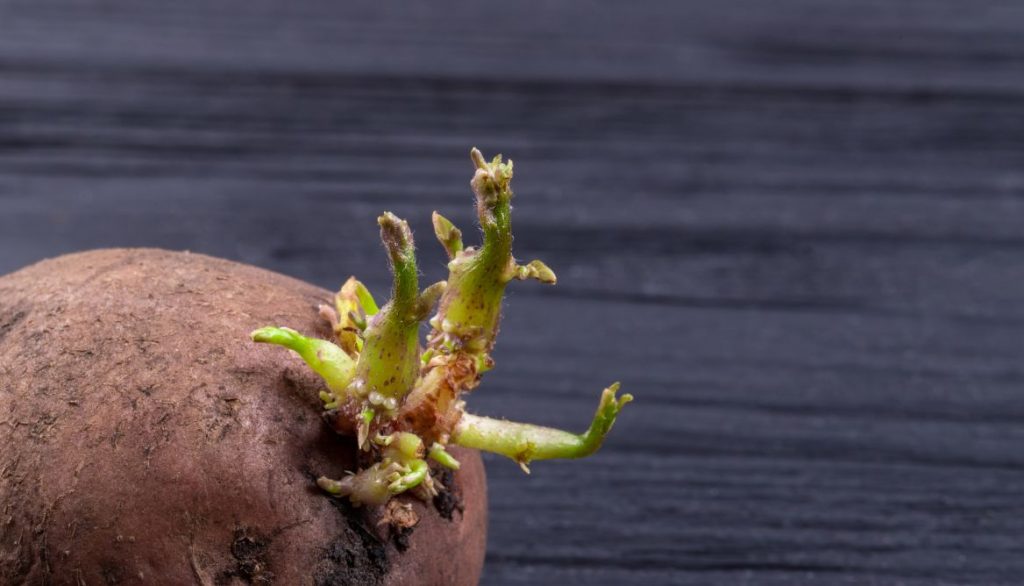
You need to leave seed potatoes for sprouting before planting them in the grow bags. Due to this simple trick, you get a much faster growth once they are in the compost. Chitting the seeds is really easy.
- Place the seeds in an egg carton with the eyes facing up
- Put them in a spot with a lot of sunlight
- Wait until the seeds sprout
- Once the seeds have sprouted to an inch, you can plant them in the grow bag
When to Water Potatoes in a Potato Grow Bag
Watering the potatoes is a really important thing as you need to maintain a consistent moisture level for the best growth. You should water them at least once a week or more if the weather is hot.
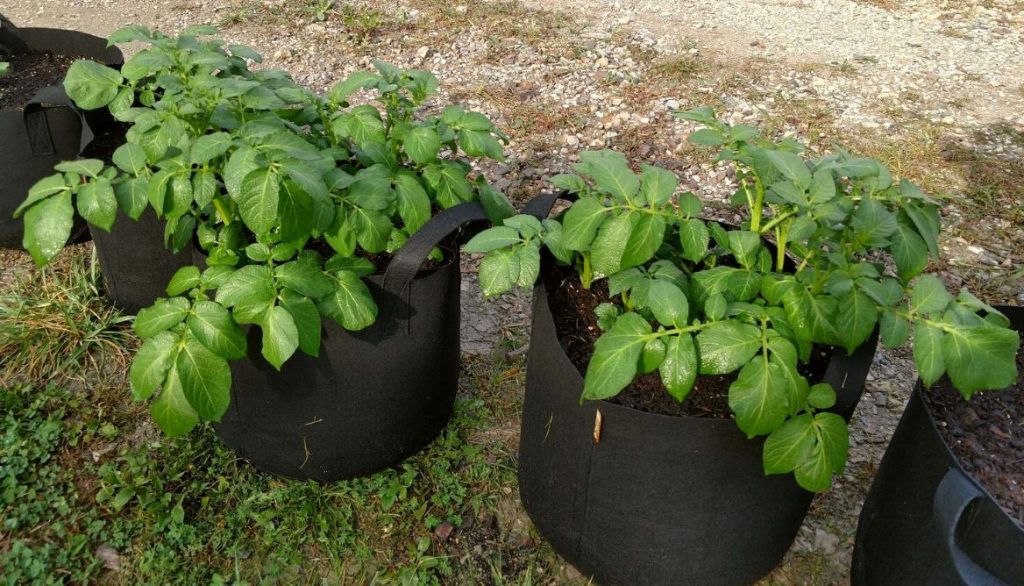
The best method of watering a potato plant in grow bag is by using a water nozzle. You need to water about 1 inch/week and don’t overwater the plant.
Watering should be done in the morning or early evening. This is when the temperature is cool and the water doesn’t evaporate quickly.
Best Time to Harvest Potatoes
The best time for harvesting depends upon the climate and the variety of potatoes. Generally speaking, if the foliage is yellow and died back after 60 to 120 days, then the potatoes are ready to be harvested.
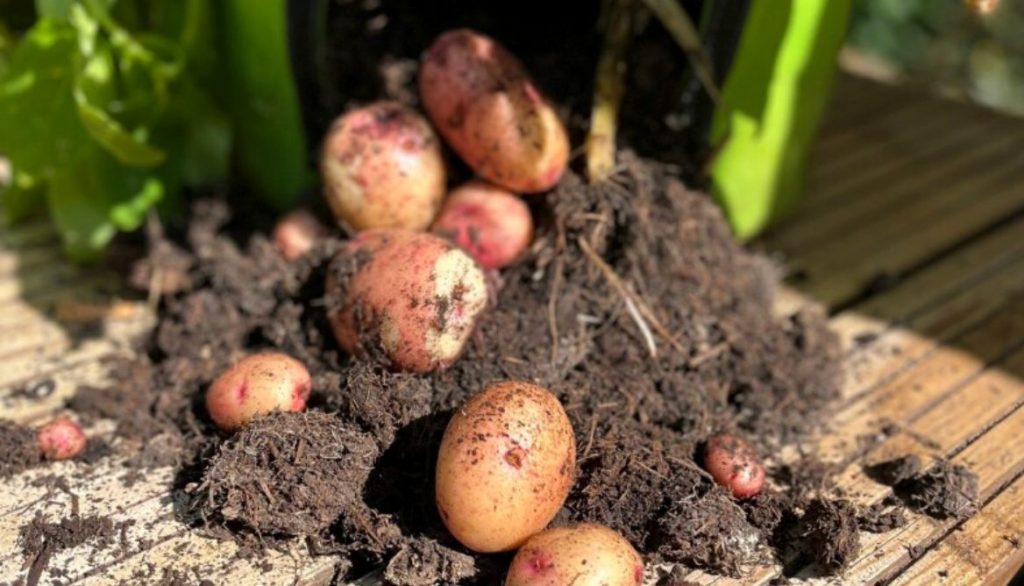
You should always dig up one of the potatoes and check for maturity. You should only harvest when they have fully grown to get the best texture and flavor.
FAQ
What are the best potatoes to grow in bags?
The best potatoes to grow in bags are Kennebec, Adirondack Blue, French Fingerling, and Russet.
How many potatoes can you grow in a bag?
It depends upon the bag, but typically, you can grow around 6 or 8 potatoes per bag.
Which potatoes are best for storage?
Potatoes like Russet and Kennebec are best for storage due to their high dry matter content.
What is the fastest-growing potato?
Some of the best fastest-growing potatoes are Rocket, Lady Christ, and Swift.
Which potatoes mature the fastest?
The potatoes that mature the fastest are the Swift and Rocket varieties.
Conclusion
In conclusion, a potato grow bag is a great way to maximize yield and space. Remember to keep the soil moist and pay attention to the planting and harvesting schedules to ensure great results. Overall, the key to success with growing potatoes in grow bags is to choose the right variety that is suitable for your local climate and soil conditions.
We have shared some potato varieties for grow bags. Each variety offers unique characteristics and flavors but our favorite is Kennebec, French Fingerling. It has a high yield, good storage quality, and disease resistance.
Before we say goodbye, one question for you, which variety of potatoes have you grown in the grow bags, and would you like to share your experience with our readers?
- How to Get Potatoes to Sprout Eyes: Detailed Growing Guide with 3 Options - July 31, 2023
- Weight of a Medium Potato: Revealed in Detailed Guide - July 29, 2023
- Maris Piper Potatoes: 9 Substitutes You Should Know About - July 27, 2023
Hello! I’m Jessica Zander, a garden coach and consultant based in the Boston area (zone 6b), offering virtual consultations across the country and Canada.
I’ve been passionate about gardening since the early 1990s, and in 2022, I launched You Can Do It Gardening to empower individuals to feel more confident in their gardening endeavors.
Following a 30-year career in nonprofit finance and operations, I transitioned out of that field in mid-June of 2023 due to the growing demand for coaching services. Interestingly, my years of presenting financial statements to boards and finance committees proved to be valuable experience for teaching people about gardening! I enjoy sharing skills, providing guidance and suggestions, and collaborating efficiently with clients to make significant improvements to their outdoor spaces, both small and large. I also regularly teach at the Arlington Continuing Education and Cambridge Adult Education.
My approach is direct and practical, akin to Mary Poppins, but tailored to your garden. Clients find satisfaction in saving money and taking pride in their own gardening achievements.

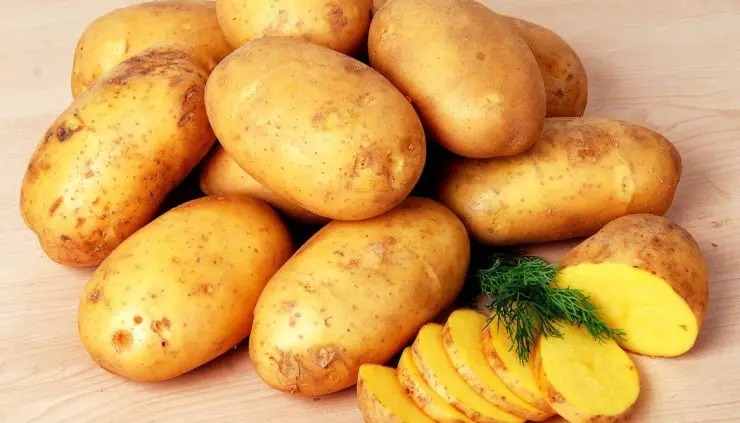





Add comment